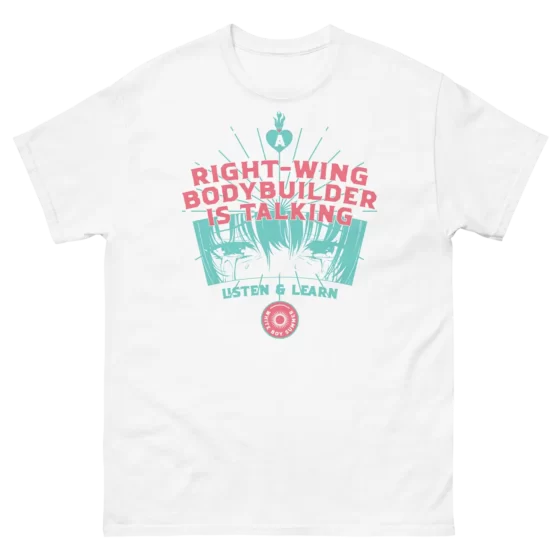Walking Austin, pt.3
South Congress has a slight Disney Land vibe. Like one goes to a Disney park to be immersed in the feeling of a charming Swiss village, you might venture down South Congress and pretend you’re in Austin’s before times. The “weird” times as the locals call it, when the city was still rife with that eclectic libertine “BurningMan-ness.” A lot of the buildings are still here. You can go to the barber and get a shave from a transvestite or buy $400 boots and imagine there’s still a frontier to ride to. South Congress is Austinland. I hope they preserve it forever.
Small Austin themed local stores are interspersed with high end retail boutiques, ritzy restaurants and condominium developments. I’m sure the owners of the small tire shop, coffee house, and tiny grocer must jump through a million bureaucratic hoops to stay open in such an investment rich environment. One of these was a famous costume store that just closed down. I know a lot of the local drag queens used to get their stuff there. They might have claimed that the rent hikes were transphobic and sought a queer property tax exemption. It might have worked.
Austin’s South Congress district reminds me of Portland. If Black Lives Matter were to riot in Austin, South Congress would no doubt bear the brunt. These storefronts and restaurants, with their huge panels of floor-to-ceiling glass are irresistible to eyes gleaming with memetic destruction. Every streetlamp is tattooed with leftist stickers. Every business hangs a pride flag in the window as if marking their adherence to the fire code. But it won’t save them, not from fire or rocks. Nothing will save them from themselves.
There is a vehement anti-tourist vibe here— that snobbishness that only progressives are allowed to have—but it keeps the materialism at bay. Don’t get me wrong, the cocktails are still $20, but at least the food is good and the shops are unique. The laurels of South Congress have not been entirely slouched upon yet.
There are several small businesses sprinkled throughout, and what chain establishments exist are tactfully chosen, not to be recognizable or garish. That discipline of class is why these people rule the day, it’s not the only quiver in the cap of power, but it’s the one women like the most. It’s the most colorful one.
How will they maintain this place? It’s a question many cities have asked before. It’s a question many countries have asked before. There’s an interesting dialogue that has gone on here in Austin which revolves around “keeping things weird”, or maintaining the local culture. I find that hypocritical, and I must refrain from feeding that snarky little devil which perches on the heart of every true American, which wants to say “Here! You brewed this poison. Drink your own cup of it!” These progressives, who looked down upon the euro-man for wanting to preserve his own culture from Marxism and cosmopolitanism, who wanted to preserve his own buildings, his own language, his own sense of self. They chided him as small, sometimes evil, for wanting to maintain his home. And now, here they are, watching the world come in with its capitalism and consumerism and all the other “isms” they have secretly wedded themselves to. Now, here they are, the ones losing their home and their weird souls. And I am tempted to say good riddance. Your weird culture was built upon the ashes of mine. Your soul was crafted with the energy of my owns chaotic death. I am not immune to the feeling of vengeance. But I possess what the progressive is unwilling to possess—shame for the dark corners of my soul.
Right now, Austin is Disney World circa 1965—a wonderful place. If the old-school liberals let go their grip and give into the pressure of centralized capital, Austin will quickly become Disney World circa 2023—a place I only see in advertisements and Worldstar videos.
The homes west of S.Congress have that same eclectic uniqueness that I have described of north and west Austin. The difference perhaps being only in the askewness of the yards and the pop color palates of the houses. I pass one that is wood sided, painted with the deepest of teal blues and warm magenta around the molding. It aspires to be the only one of its kind, as I imagine the owner does. This neighborhood is like the rest of Austin, but it has been bohemia-fied. On one house, potted plants have taken up every inch of the railing, the deck, and the rocking chair which has been sat in by no human, only this large dead jade for years perhaps. Stalks of bamboo overgrow and stab me on the walking path. The bodies of dormant plants grow askew of the raised bed gardens and rustle past me in the brisk February wind. Some of the houses look nearly uninhabited, but in this city one knows better, it is simply that liberal affinity for chaos which at times amuses me. I tuck my chin into my collar and walk on.
Between s.Congress, 1st st, and Lamar is my favorite part of the city. It has the instinct for chaos which is controlled by wealth, class, and high I.Q. The houses are beautiful, the restaurants are unique and serve great food. On the corner of 3rd and Mary I pass a literal castle nestled into an otherwise normal Austin neighborhood. It is a legitimate custom made fortress of Texas flagstone, port holes, turrets and all. That election of style that I talk about—this is the heart of it in Austin. No two homes are the same, and no single home is one I would find objectionable, besides the spacebarns of course. This is what I imagine Portland was like in the 90’s. Controlled chaos. Just a touch of madness. A single pill of promiscuity. In the before times, before the overdose.
What a secret lively place this must have been when the owners of these eclectic and highly artistic residential areas weren’t pushing octogenarian status. Again, I marvel at the physical beauty, the architectural playfulness, the ingenuity of the homes and gardens. But I look around as walk through these neighborhoods and I ask myself: Where is everyone? Most of the beautiful homes look dormant. There are no people, certainly no children. And I wonder: Who will inherit this city? No one perhaps? Is that what happened to Portland? Is that what happened to San Francisco? Is that what happens to the homes of a childless mass. No inheritance. No future. No vanguard. Can a place without youth maintain itself? OR is it bound to commit suicide by existential dread. Are all these homes soon to be ruins like that of Detroit or St. Louis? Still beautiful, still marvelous, but empty. Like a beautiful universe with no one to witness it.
The only way to save this place is to immaculately conceive a child in the womb of every American woman in Austin. There must be babies, for when the ideas and premises of decay inevitably come to destroy this city, there must be someone there to argue against them. Who will be there to argue against the demolition of these homes in order to build condominium bugman pods or prisons for the mentally insane and poor? What youth will come up with another way—something which preserves and yet expands? Who will have the will for preservation when all the boomers who own these houses die. Who will call them home? Investment banks? The Chinese? The boomers forsook their children, deracinated them from past and future, and now, resented by their detached children, they will be forsaken, their castles and manors sold to highest bidder. The whole city sold to the highest bidder. Perhaps a whole civilization.
As I walk through Austin, at times I wonder if I’m the only one drinking it in.
…
If growth requires becoming a monstrosity, it is better to adopt a philosophy of maintenance. For Austin, if growth means more of these megacomplex asylums, then growth is a cancer. Growth can either be a sign of an organism’s increasing strength, or a sign of its cancerous destruction. The decisions that Austin will make as to how it intends to accommodate its incoming population will determine the fate of the entire city. As of now, the way in which the incoming poor and service class is being asked to live is inhumane and will overtime imbue in them a deep self-consciousness of how they are viewed by the upper classes in the north and in the west—fundamentally as interchangeable robots, unhuman, diverse, and yet, not important. Eventually these denizens of the southern lower class will have the reaction I have had when walking in this city from north to south—the heartless megaplexes of the south in contrast with the charming and soulful neighborhoods of the north will imbue in them a bitter feeling of detachment from the city and thus the nation. They will develop a deep sense of otherness, being walled off and shunned away. And in their hearts, they will grow to despise those who get to live as human beings in the old town, while they are forced to live a new robotic and deracinated existence.
South of Oldorf, the character of the city changes. The charm reaches the end of its cast and fades away. That old electiveness gives way to the American default: brown strip mall modernism. The megacomplex apartment building, grey and cold, looms large in this area south of highway 290. I can tell that this was once the outskirts of town. Little pockets of neighborhoods with a history of shantyism and overgrowth dot the landscape. The neighborhoods far south between 290 and Slaughter have that same overgrown-ness that can be witnessed near South Congress, though this overgrowth is less of an aesthetic choice and more of a material necessity. Or am I letting them off the hook? Is this overgrowth the cause of spiritual ambivalence?
South of highway 290 marks the beginning of a southward territory dominated by a class of buildings which in all rights deserves to be infamous. Between Stassney and Slaughter rd. the streets widen and look specifically Texan. The developments spread into the familiar urban sprawl. This road’s only purpose is as a highway, connecting downtown to its supply of service workers—those who call the grey warehouses home.
Must a poor part of the world also be ugly? Must it be grey and brown? Must its materials be cheap, its planning haphazard? There is a liberal heuristic which asserts that all impoverishment is the same. All poorness is by default, criminality and shabbiness. They assert this by replying to any question about ugliness and shabbiness with a trite response of “What can you expect of poor people?” I heard once of a concept known as “noble poverty”—that one could be materially poor and spiritually rich. That a community’s poverty could be a matter of circumstance and not of their own deviance and spiritual bankruptcy? Am I the naïve one?
Is it not the sickest of all damnations that poverty and ugliness are wedded to together forever? The liberal hides his failures in this muddling apology. In his abdication of the poor’s culpability for their station, he plays a sleight of hand. He claims to be absolving the poor of their behavioral responsibility, but he is really absolving himself. He is merely distracting from the culpability of his own social attitudes.
































